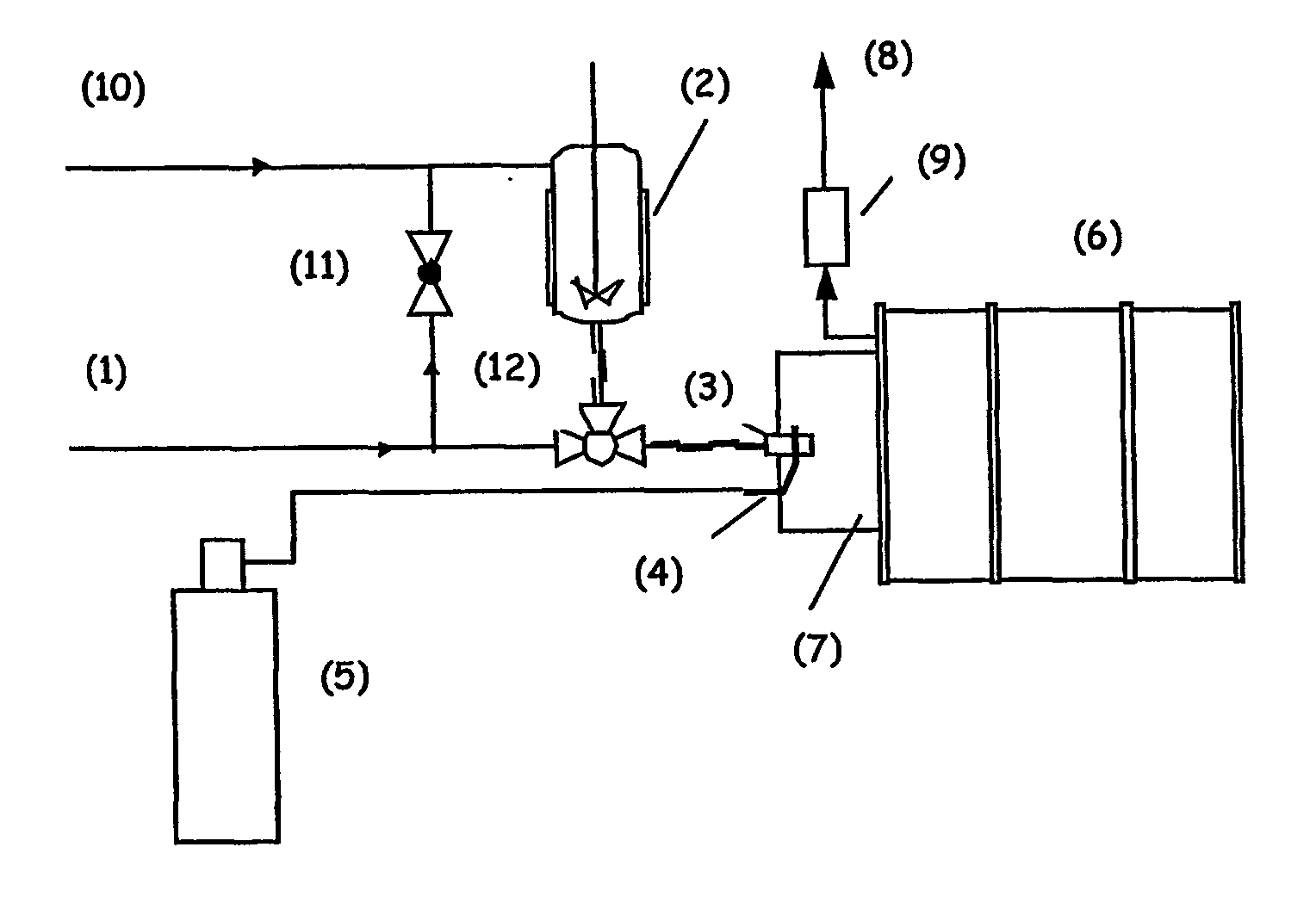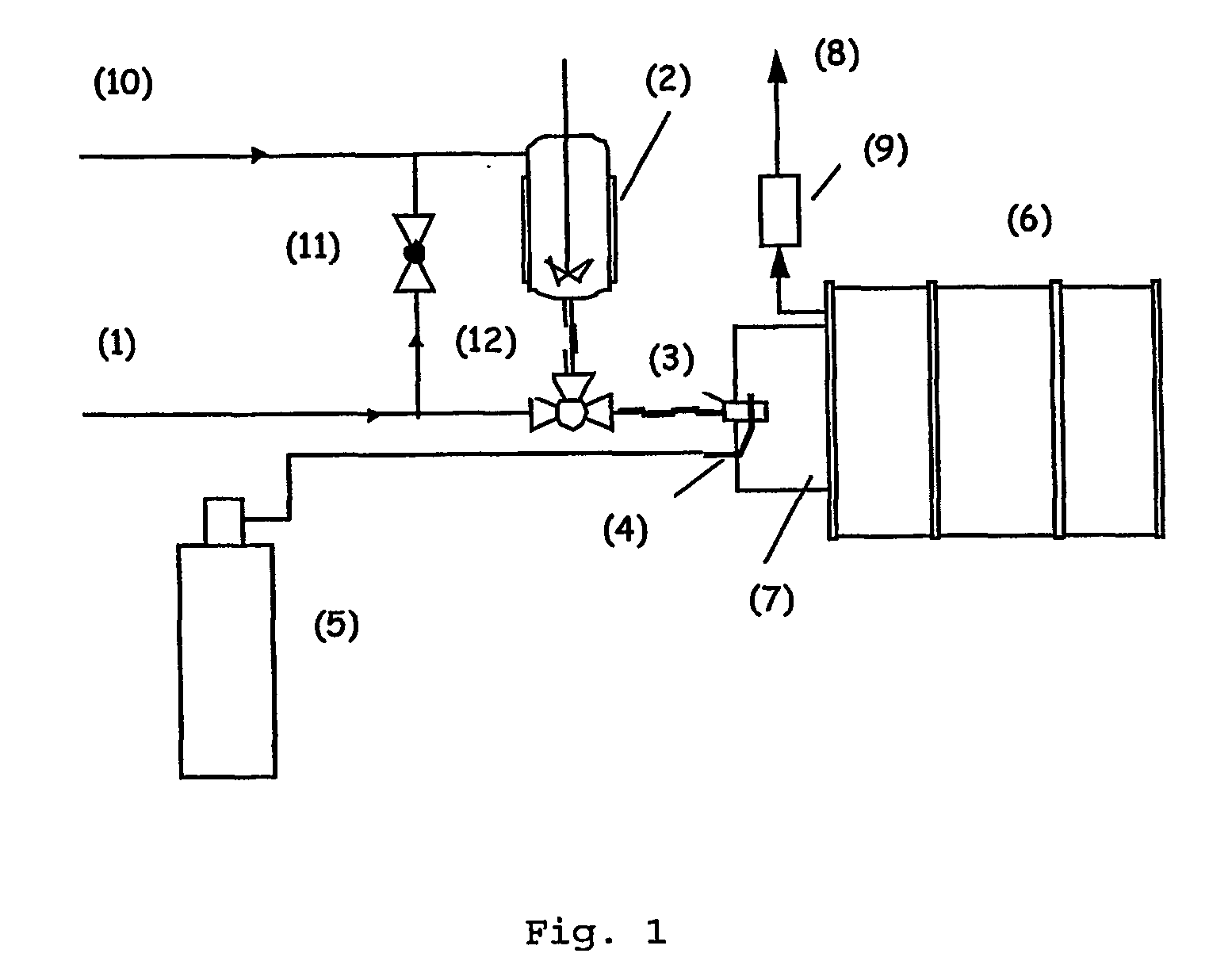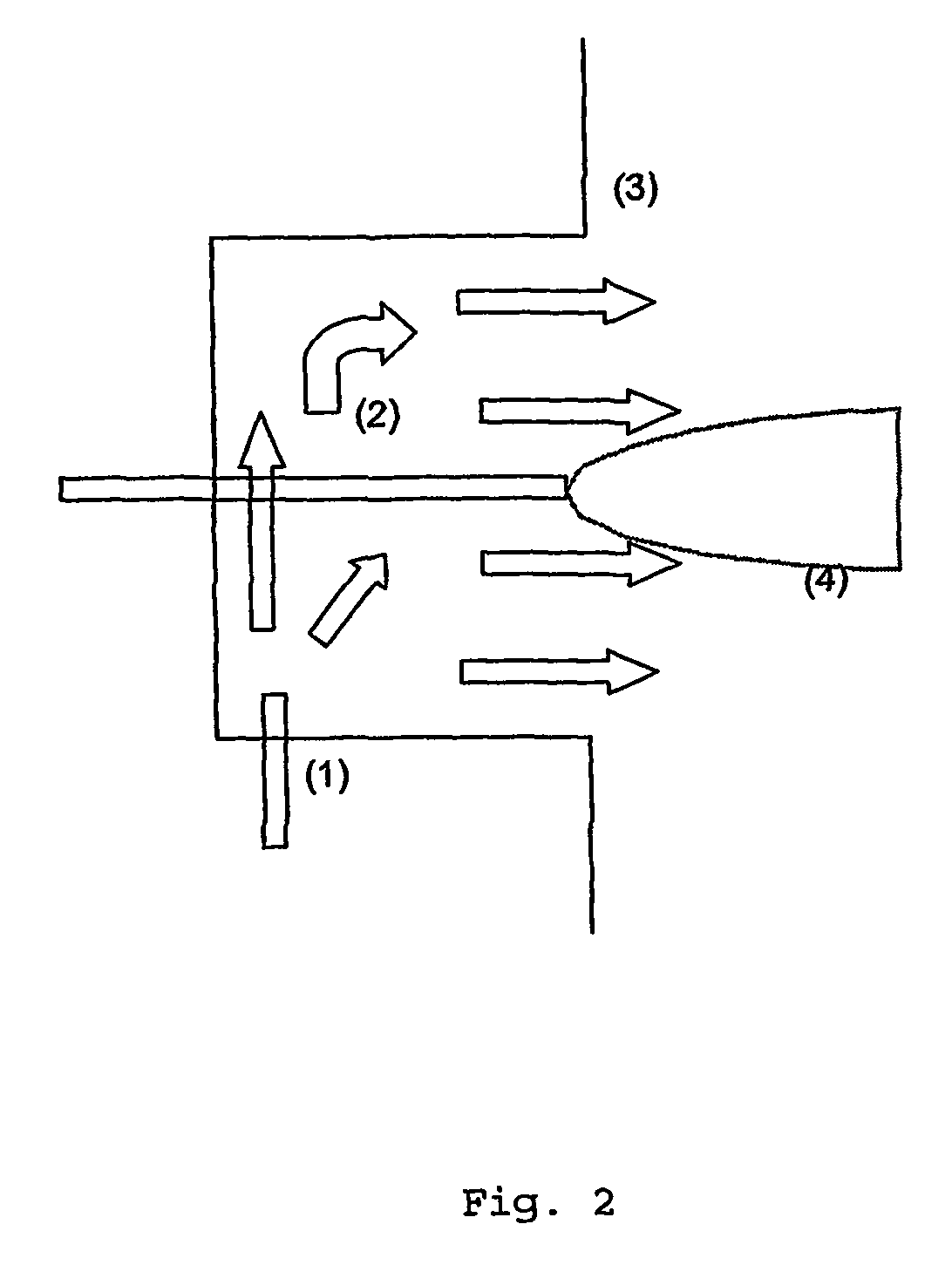Process for the Preparation of an Edible Dispersion Comprising Oil and Structuring Agent
- Summary
- Abstract
- Description
- Claims
- Application Information
AI Technical Summary
Benefits of technology
Problems solved by technology
Method used
Image
Examples
example 1
[0072] Fat Micronisation
[0073] A set-up was constructed to dissolve carbon dioxide in the melt and expand the mixture over a nozzle to atmospheric pressure. The micronised product was collected in a drum (6) of 250 liters. The set-up is illustrated in FIG. 1. [0074] Autoclave The equipment consists of a 1-liter autoclave (2) equipped with a mechanical stirrer (6-blade turbine impeller), a water jacket for heating and a Pt-100 resistance thermometer. The inner diameter of the autoclave is 76 mm. The autoclave has connections at the top and at the bottom. [0075] Tubing The bottom connection of the vessel was used to pressurise the system with carbon dioxide or to lead the mixture to the nozzle. A 3-way valve (12) is used to switch between CO2 supply (1) and nozzle (3). To expel the mixture from the vessel the CO2 is supplied to the top of the autoclave via valve (11). The length of tube between the bottom connection and the nozzle (3) is approximately 30 cm. All tubing has an outer d...
examples 2-4
[0099] Example 1 was repeated, but now instead of fat a mixture of fat and sunflower oil was micronised. The composition of the mixture of fat and oil is shown in table 3. In the preparation of the emulsion a Turrax speed of 8000 rpm was used and the Turrax time was 4 minutes.
TABLE 4Micronisation parameters and emulsion propertiesof examples 2-4FractionTexture ofsunflowermicronisedBostwickD(3,3)Exampleoil (wt. %)product(cm)(μm)222Fine dry144.36powder350Slightly14.63.06granularsomewhatstickypowder475Ointment10—likestructure
[0100] All micronised products of examples 2-4 showed the presence of alpha-polymorph material in an amount of 100% and comprised submicron size particles. ‘-’ means not determined.
TABLE 5Oil exudation (%) of the emulsions ofexamples 2 to 4 as function of the storage time at 15° C.StoragetimeExample 2Example 3Example 41day5004days18005days40001week45002weeks520.503weeks520.504weeks52106weeks521.508weeks552010weeks552012weeks552014weeks5520.516weeks5520.5
[0101] ...
example 5
[0102] Micronised fat was prepared according to example 1, fat micronisation using instead as fat rapeseed oil hardened to a slip melting point of 68° C.
[0103] A dispersion of solid matter in a fat phase was prepared by first preparing a mixture of 4.6 parts (all parts are weight parts) micronised fat in 4.6 parts sunflower oil and stirring the mixture for 3 minutes at about 18° C. under vacuum. The obtained mixture was added to 49 parts sunflower oil and mixed under vacuum at about 18° C. for 1 minute.
[0104] To this mixture was added 41.2 parts flour and 0.6 parts parsley flakes (dried) and the resulting mixture was stirred under vacuum at about 18° C. for 1 minute, 30 seconds. The resulting dispersion was stable for more than one month at room temperature without substantial oil exudation.
PUM
 Login to View More
Login to View More Abstract
Description
Claims
Application Information
 Login to View More
Login to View More - R&D
- Intellectual Property
- Life Sciences
- Materials
- Tech Scout
- Unparalleled Data Quality
- Higher Quality Content
- 60% Fewer Hallucinations
Browse by: Latest US Patents, China's latest patents, Technical Efficacy Thesaurus, Application Domain, Technology Topic, Popular Technical Reports.
© 2025 PatSnap. All rights reserved.Legal|Privacy policy|Modern Slavery Act Transparency Statement|Sitemap|About US| Contact US: help@patsnap.com



